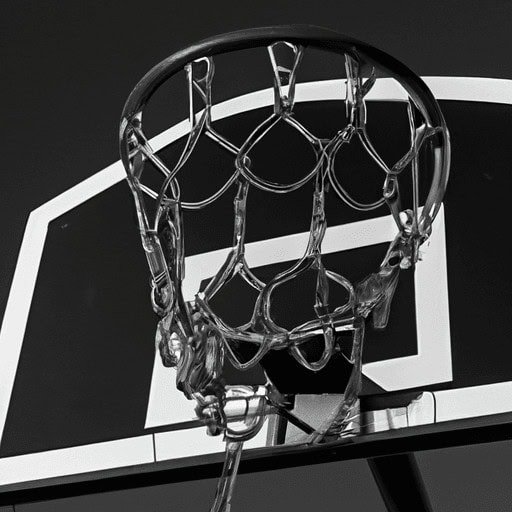Imagine stepping onto a basketball court, ready to shoot some hoops and have a great time with friends. As you raise the ball above your head, aiming directly at the rim, have you stopped to consider the safety standards that these essential components of the game should meet? From the sturdiness of the backboard to the durability of the rim and net, ensuring the safety of players is paramount. In this article, we will explore the importance of safety standards for basketball rims, backboards, and nets, and why they are crucial for a fun and worry-free game. So grab your basketball and join us as we delve into the world of basketball equipment safety.

I. Rim Safety Standards
Basketball rims are an essential component of the game, and they must adhere to certain safety standards to ensure the well-being of the players. When it comes to rim safety standards, there are several factors to consider, including material and construction, durability, and size and design.
A. Material and Construction
The material and construction of basketball rims play a crucial role in determining their safety. Most rims are made of sturdy materials such as steel, which provides the necessary strength to withstand the force exerted during gameplay. It is important to ensure that the material used is of high quality, as it directly impacts the rim’s ability to withstand heavy use and potential damage.
Additionally, the construction of the rim must be carefully considered. Rims should be securely attached to the backboard and designed to withstand the constant impact of basketballs. Welding or other secure attachment methods should be used to ensure the rim remains intact and stable throughout intense play.
B. Durability
Durability is a key aspect of rim safety standards. Basketball rims must be able to withstand rough play, frequent dunking, and the forceful slamming of the ball. A high level of durability ensures that the rim remains intact and functional, reducing the risk of accidents or injuries associated with a damaged or weakened rim.
To meet safety standards, rims should undergo rigorous testing to ensure their durability. Efforts should be made to identify any weak points or potential vulnerabilities and address them to enhance the overall strength and durability of the rim.
C. Size and Design
The size and design of basketball rims are also significant considerations when it comes to safety standards. Rims should be designed to provide a suitable target area for players while maintaining a consistent size and shape. A standard rim’s diameter measures 18 inches, allowing players to accurately aim and shoot the ball.
Furthermore, the overall design of the rim must be free from sharp edges or protrusions that could pose a risk to players. The rim should be smooth and well-rounded to prevent any potential injuries during gameplay.
II. Backboard Safety Standards
The backboard is another critical component of a basketball hoop that must adhere to safety standards. Considering both the material and thickness, as well as the frame construction and transparency, is essential to ensure backboard safety.
A. Material and Thickness
Backboards should be constructed using high-quality, impact-resistant materials, such as tempered glass, acrylic, or polycarbonate. The choice of material is crucial as it determines the backboard’s ability to withstand the force exerted during gameplay and provide a suitable rebound surface.
Additionally, the thickness of the backboard is a crucial factor in ensuring safety standards are met. Thicker backboards are generally more durable and less prone to breakage, reducing the risk of injuries caused by shattered or fragmented glass or plastic.
B. Frame Construction
The frame construction of the backboard is an important aspect of safety standards. The frame should be rigid and stable, firmly securing the backboard in place. It should be made of durable materials, such as steel, that can withstand the continuous pressure and stress experienced during gameplay.
In addition to durability, the frame should also be designed to absorb and distribute the impact force. This ensures that the backboard remains secure and intact even when players dunk or exert force on it.
C. Transparency
Transparency is an often-overlooked safety consideration for backboards. Transparent backboards allow players to see through the hoop, enabling better visual judgment during gameplay. This can improve player safety as it reduces the risk of collision due to restricted vision.
To meet safety standards, backboards should be adequately transparent, free from any cloudiness or distortion that may hinder the players’ visibility. Regular inspections and maintenance should be carried out to ensure the transparency of the backboard is maintained.
III. Net Safety Standards
Basketball nets, although seemingly simple components, also need to meet safety standards to prevent accidents and ensure player well-being. Two crucial factors to consider are the material and strength of the net, as well as its attachment method.
A. Material and Strength
Basketball nets should be made of high-quality, durable materials that are capable of withstanding the impact of the ball and continuous use. Nylon is a commonly used material that meets these requirements, providing both strength and flexibility.
The net’s strength is crucial in preventing it from breaking or tearing during gameplay. A strong net ensures that it remains intact, reducing the risk of injuries caused by loose or tangled netting.
B. Attachment Method
The attachment method of the net is another important aspect of safety standards. The net should be securely fastened to the rim to prevent it from becoming dislodged or entangled during gameplay. This ensures that players can safely interact with the net without the risk of injury caused by a loose or unstable attachment.
Efficient attachment methods, such as durable hooks or clips, should be used to secure the net to the rim. Regular inspections and maintenance are necessary to ensure the attachment remains secure over time.
IV. Overall Stability and Installation
To ensure overall safety, basketball hoops must meet specific standards in terms of stability and installation. Key factors to consider are pole and base stability, the height adjustment mechanism, and the anchoring system.
A. Pole and Base Stability
Stability is crucial to prevent the basketball hoop from toppling over during intense gameplay. The pole and base should be designed to provide optimal stability and minimize any movement or swaying. High-quality materials, such as steel, should be used to construct the pole and base to ensure their strength and stability.
Additionally, the base should be adequately weighted to counterbalance the forces exerted during gameplay. Larger and heavier bases are generally more stable, providing a solid foundation for the hoop.
B. Height Adjustment Mechanism
Basketball hoops are often adjustable to accommodate players of different ages and skill levels. The height adjustment mechanism should meet safety standards to ensure smooth and secure adjustments. It should be easy to use and lock into place firmly, preventing any unintentional movement or height changes while the game is in progress.
Regular maintenance and inspections are essential to ensure the height adjustment mechanism remains functional and safe. Any signs of wear or damage should be promptly addressed to prevent accidents or injuries.
C. Anchoring System
A secure and robust anchoring system is vital to maintain the stability of the basketball hoop. The system should be designed to prevent any wobbling or movement, even during intense play. Anchoring methods could include direct burial of the pole, using concrete footings, or utilizing ground anchors.
Regular checks and maintenance should be conducted to ensure the anchoring system remains secure and intact. Periodically inspecting the system and making any necessary adjustments or repairs will help maintain its effectiveness and prevent potential accidents.

V. Protection and Padding
Providing additional protection through padding is an important aspect of ensuring player safety. Two key areas where padding should be considered are the rim and backboard, as well as the pole and base.
A. Rim and Backboard Padding
Applying padding to the rim and backboard can help prevent injuries caused by accidental contact. It reduces the risk of impact-related injuries, such as cuts, bruises, or head injuries.
The padding should be made of high-quality materials, such as foam or rubber, that can withstand continuous impact and protect the players effectively. It should be securely attached to the rim and backboard, maintaining its position and integrity even during intense play.
B. Pole and Base Padding
Padding the pole and base further enhances player safety by minimizing the risk of collision or accidental contact. Players often come into contact with the pole and base during gameplay, making it essential to ensure these areas are adequately cushioned.
Similar to rim and backboard padding, the pole and base padding should be durable and securely attached. It should effectively absorb impact and protect players from potential injuries.
In conclusion, safety standards for basketball rims, backboards, and nets are crucial elements to consider in order to protect players from injuries during gameplay. Material and construction, durability, size and design, transparency, strength, attachment methods, stability, installation, and padding are all key factors that must be taken into account when creating and maintaining basketball equipment. By adhering to these safety standards, players can enjoy the game with peace of mind, knowing that their well-being is prioritized.

